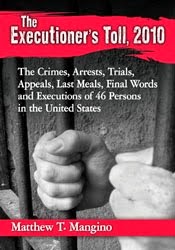Matthew T. Mangino
The Pennsylvania Law Weekly
July 20, 2015
The U.S. Supreme Court recently handed down a smattering of criminal justice-related decisions. Although those decisions will have differing influence on the criminal justice system, it is important to note two recent Pennsylvania Supreme Court decisions that will have an impact as well.
The U.S. Supreme Court cases that grabbed the headlines were the Obamacare decision and the same-sex marriage decision. Both cases may have enhanced the legacy of President Obama, but as Yale Law School professor Heather Gerken summed it up in POLITICO Magazine, "Behind each of the high-profile cases ... the country had already made the shift." Neither decision was any great surprise.
With regard to the high court's treatment of criminal justice matters—still no surprises. The case generating the most attention was out of Oklahoma. In that case, the Supreme Court revisited the issue of lethal injection.
It wasn't long ago that the Supreme Court first reviewed lethal injection. In 2008, in
Baze v. Rees, 533 U.S. 25 (2008), the court ruled lethal injection did not violate the Eighth Amendment's ban against cruel and unusual punishment. After botched executions in Arizona, Ohio and Oklahoma, the court decided to take a second look at lethal injection.
Last month, the Supreme Court ruled in
Glossip v. Gross, No. 14-7955, that the condemned Oklahoma inmates failed to present a less painful alternative to carry out executions and therefore, as in 2008, the state's execution protocol did not violate the Eighth Amendment.
The court also took up an Ohio case to determine whether the Sixth Amendment's confrontation clause prohibited prosecutors from introducing the out-of-court statement of a 3-year-old victim of abuse who was unavailable for trial.
Justice Samuel Alito wrote for the majority in declaring the statement did not violate the confrontation clause of the Sixth Amendment. "Because neither the child nor his teachers had the primary purpose of assisting in [the abuser's] prosecution, the child's statements do not implicate the confrontation clause and therefore were admissible at trial," he wrote in
Ohio v. Clark, No. 13-1352.
In another criminal justice decision, the high court struck down a Los Angeles ordinance enacted in 1899. The ordinance allowed police to search hotel registries without a warrant with the goal of cracking down on prostitution, gambling and drug trafficking, particularly at low-cost hotels and motels, The Los Angeles Times reported.
Hotel owners argued the ordinance was a violation of their Fourth Amendment right against unreasonable search and seizure. In
City of Los Angeles v. Patel, No. 13-1175, the Supreme Court agreed.
In
Johnson v. United States, No. 13-7120, the Supreme Court also struck down a 1984 federal law that set a mandatory minimum 15-year sentence for a third conviction of a "violent felony or serious drug offense." The law is the federal version of "three strikes" laws that impose long penalties for repeat offenders.
Finally, the U.S. Supreme Court in
Elonis v. United States, 13-983, ruled in favor of a Pennsylvania man who posted several violent messages on Facebook and was convicted under a federal threat statute. The court said that it wasn't enough to convict based solely on the idea that a reasonable person would regard a communication as a threat. "Our holding makes clear that negligence is not sufficient to support a conviction," wrote Chief Justice John Roberts Jr.
The Pennsylvania Supreme Court took up two notable criminal justice cases as well. Both cases were argued before the court Sept. 10, 2014, and the decisions were issued within weeks of each other in late May and early June.
Commonwealth v. Hopkins, No. 98 MAP 2013, struck down the imposition of a mandatory minimum sentence for selling drugs within 1,000 feet of a school. In
Commonwealth v. Bland, No. 33 of 2013, the court rejected the effectiveness of an anticipatory invocation of the right to counsel pursuant to
Miranda v. Arizona, 384 U.S. 436 (1966).
Dennis Bland was arrested in Florida for a homicide in Pennsylvania. The day after Bland's arrest, a lawyer faxed Bland a form letter that "reflected a very clear putative" invocation of Bland's
Miranda right to counsel.
Bland signed the form and returned it to his lawyer, who forwarded copies to the Philadelphia Police Department and the Philadelphia District Attorney's Office. Bland returned to Pennsylvania after waiving extradition.
About a week later, while he remained in custody, a Philadelphia detective came to interview him and provided him with
Miranda warnings. During the interview, Bland waived
Miranda and confessed to the murder.
Prior to trial, Bland sought to suppress the confession, claiming that the police had violated his rights under
Miranda. The court granted the motion and excluded his confessions from trial.
The appeal, which ultimately made its way to the Supreme Court, "centers on the nature of a valid invocation of the
Miranda-based right to counsel, specifically, in terms of whether the right must be asserted in close temporal proximity to custodial interrogation or may be effectively invoked remotely from such questioning."
The commonwealth argued that rejecting an anticipatory invocation maintains an appropriate balance between the rights of the accused and the compelling state interest in effective police investigations.
Chief Justice Thomas G. Saylor, on behalf of the majority, wrote, "We hold that, to require a suspension of questioning by law enforcement officials on pain of an exclusionary remedy, an invocation of the
Miranda-based right to counsel must be made upon or after actual or imminent commencement of in-custody interrogation."
In
Hopkins, the Pennsylvania Supreme Court was confronted with the imposition of a two-year mandatory minimum sentence for delivery of a controlled substance within 1,000 feet of a school.
The application of the mandatory minimum had come into question as a result of the U.S. Supreme Court's decision in
Alleyne v. United States, 133 S.Ct. 2151 (2013). In Alleyne, the court held that, under the Sixth Amendment, a jury must find beyond a reasonable doubt any fact that increases a mandatory minimum sentence.
In 2012, Kyle Hopkins sold heroin to a confidential informant on three occasions; one of those sales was within a school zone. He was arrested. The trial court declared the mandatory minimum, 18 Pa.C.S.6317, unconstitutional because it required the judge to make a finding, by a preponderance of the evidence, that the sale occurred in a school zone.
On appeal, the commonwealth acknowledged that portions of the statute were unconstitutional pursuant to
Alleyne. However, it argued that those portions of the law were severable. The Supreme Court disagreed. The unconstitutional provisions of the statute were so intertwined with the remaining constitutional portions of the law that only legislative action could cure the defect.
The commonwealth also asserted that the employment of special interrogatories along with a verdict slip could enable a jury to make findings beyond a reasonable doubt as to the age of the offender and proximity to the school. The Supreme Court rejected that argument as well.
The Superior Court has already struck two other mandatory minimums—defendants convicted of robberies involving a firearm and crimes against victims under age 16. The Supreme Court's decision regarding severability supports the findings by the Superior Court.
There appears to be growing concern that additional mandatory minimum sentences will succumb to appellate review. The question is, will the legislature do anything about it? More and more lawmakers are looking to evidence-based practices to guide the bulging and costly criminal justice system. Some are suggesting, as James Swetz, a recent president of the Pennsylvania Association of Criminal Defense Lawyers, did to the Allentown Morning Call, "Mandatory minimums simply do not work."
Matthew T. Mangino is of counsel with Luxenberg, Garbett, Kelly & George. His book, "The Executioner's Toll," was released by McFarland & Co. You can reach him at www.mattmangino.com and follow him on Twitter @MatthewTMangino.To read more
CLICK HERE







